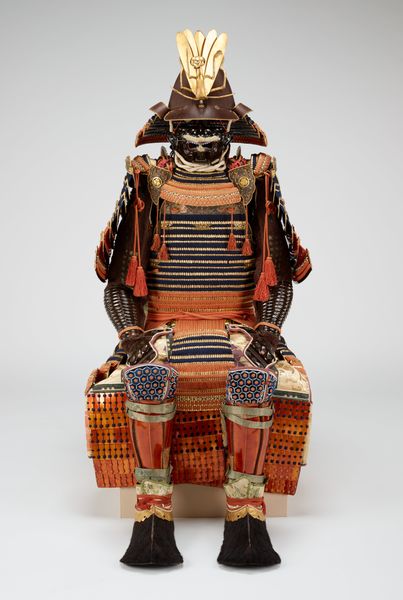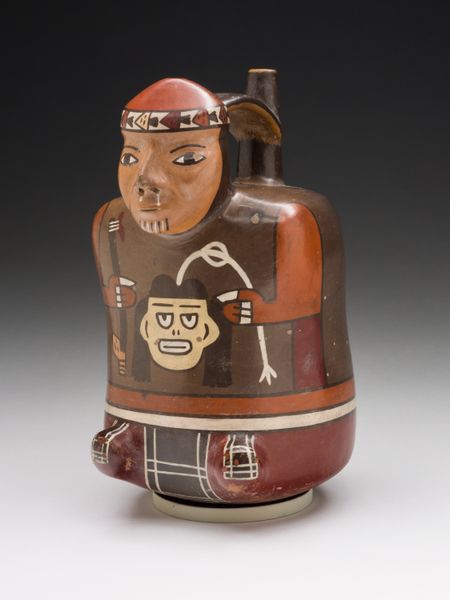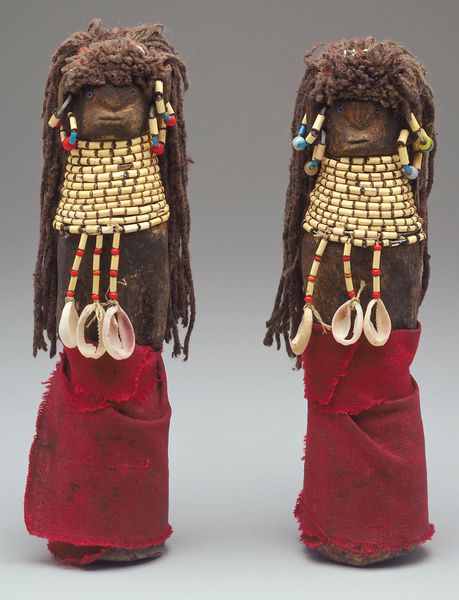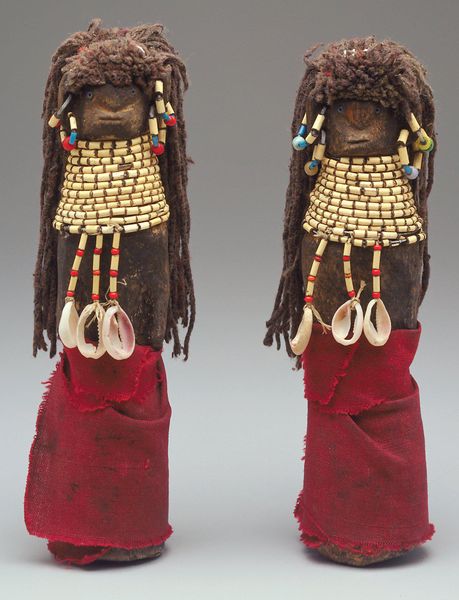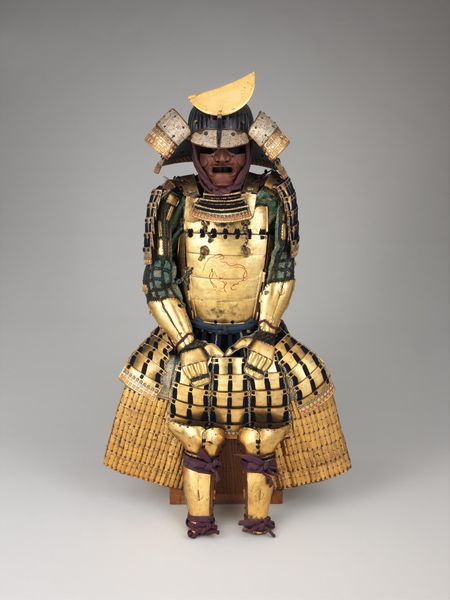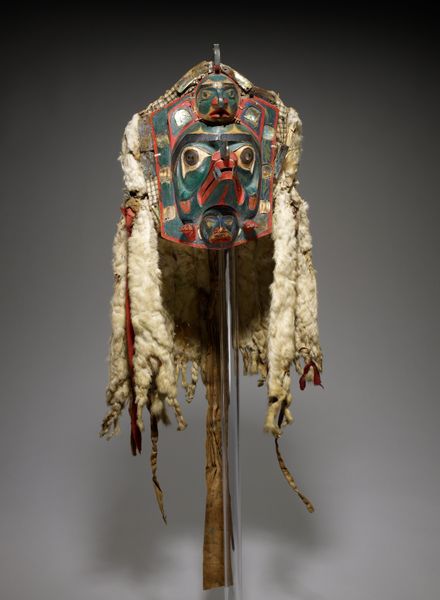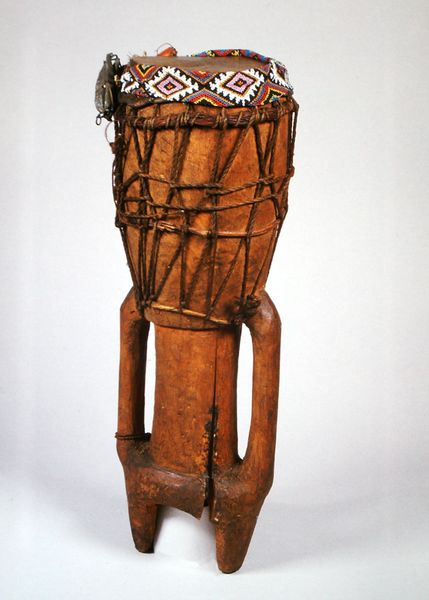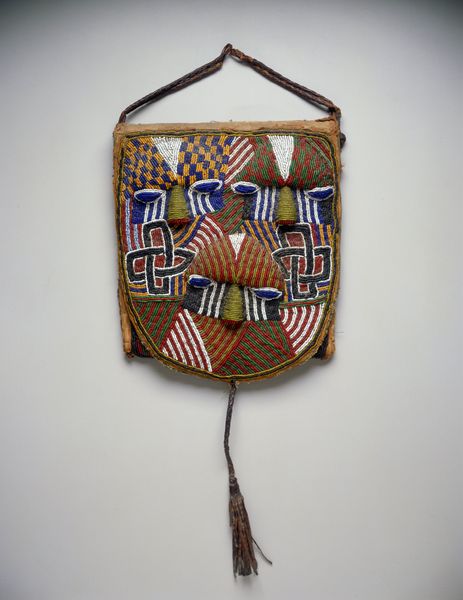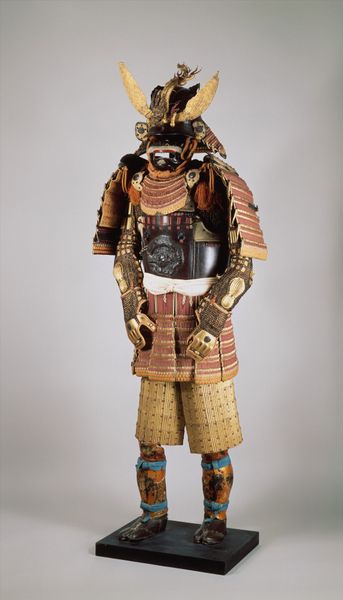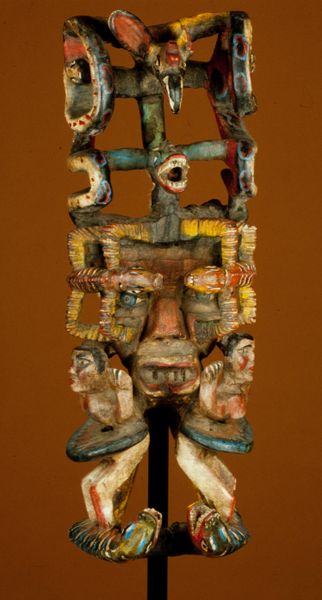
metal, sculpture, wood
#
medieval
#
metal
#
asian-art
#
japan
#
figuration
#
sculpture
#
wood
#
armor
Dimensions: as mounted, H. 40 in. (101.6 cm); W. 20 1/2 in. (52.1 cm); D. 17 1/2 in. (44.5 cm). Wt. 9 lb. 13.2 oz. (4456.5 g)
Copyright: Public Domain
Curator: Look at this "Gusoku," or suit of armor. The piece in front of us dates to sometime between 1701 and 2015 and is on display at the Metropolitan Museum of Art. It's quite an artifact, isn't it? Editor: Indeed, a formidable figure! The initial impact lies in its anthropomorphic design—the fierce facial mask in particular, which lends the piece a palpable sense of grim power. Curator: The formal structure of the piece reflects the highly codified design principles used during the Edo period. It incorporates lacquered metal and meticulously crafted wood elements, layered to provide both protection and a striking aesthetic presence. You can see here the semiotic dance between power and artistry, with the crescent moon on top indicating what, in particular? Editor: Such a material assemblage speaks volumes about societal hierarchy and martial craftsmanship. Consider the layers upon layers, a study in cumulative skill. Each plate, each woven thread tells a story of labour, extraction, and cultural imperative that far surpasses the mere aesthetic. This challenges the separation of design and use, placing emphasis on how form manifests social functions and resource control. Curator: An incisive point about labor and cultural power informing this suit. If we parse the colors and textures—the deep blacks, contrasting vividly with bright orange and white bands, all carefully positioned in the arrangement of form. Here the construction materials speak as clearly as a royal heraldic emblem. Do you pick up on something similar? Editor: Absolutely! Looking closely, the individual elements come into play. The coarse weave of the fabric underscores material reality, giving gravity to symbolic form. There is also tension and dialogue about the boundaries between refined and functional—it’s also about what they made them from. This piece serves to highlight craftsmanship's vital intersection between art and material culture. Curator: It seems our engagement with this armour has prompted two distinctive yet overlapping understandings of its complex artistry. Its value as a culturally significant aesthetic icon versus as an exceptional achievement born out of materials and human exertion. Editor: True; perhaps this dialectic represents precisely why artworks such as these maintain an eternal intrigue over historical echelons—through semiotics or cultural relevance alike!
Comments
No comments
Be the first to comment and join the conversation on the ultimate creative platform.

